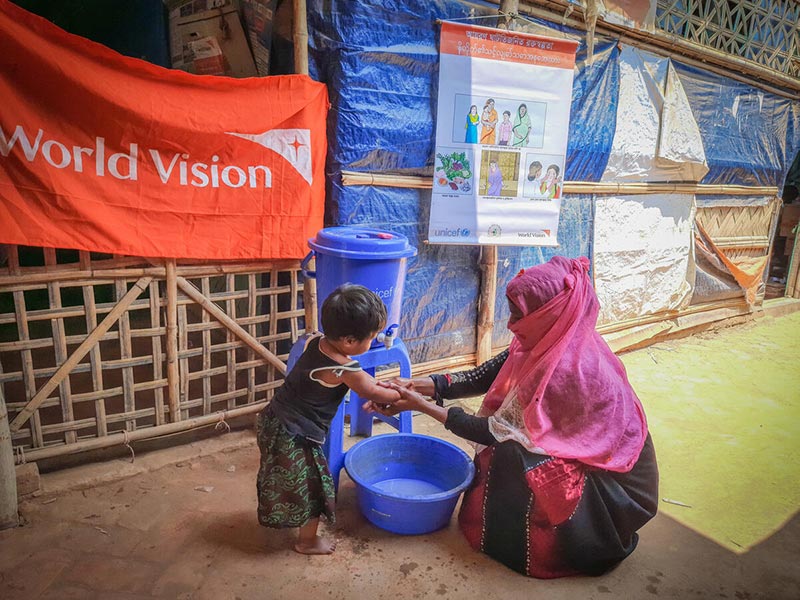COX’S BAZAR (August 24, 2020)—Three years after mass atrocities in Myanmar forced them to flee for their lives, 860,000 Rohingya—more than half of whom are children—are still living in limbo in the world’s largest refugee camp. Their future remains uncertain at best. As the crisis enters its fourth year, reduced global funding for emergencies—due in part to COVID-19-related economic havoc—threatens to further deteriorate the already dire living conditions and access to services for these vulnerable children and their families, warns World Vision.
“The Rohingya are resilient, courageous survivors, but refugee parents here are afraid,” says Fredrick Christopher, Response Director for World Vision, based in Cox’s Bazar. “They see their children growing up in the camps without the quality education they will need to build a new life back home in Myanmar one day, or the life skills to cope with daily hardship in the camp. They are quickly becoming a lost generation. Mothers say to me, ‘It’s been three years. Has the world forgotten us already’?”
Christopher says COVID-19 precautions and restrictions in the camps—although needed—are amplifying the extreme protection risks that Rohingya children already face routinely, such as physical and sexual violence, exploitation and abuse, child marriage, child labour and gender-based violence.
“Before the pandemic, Rohingya children had limited access to any educational services. Now with learning centers closed and fewer humanitarians accessing in the camps, they have even less protection. Without work, their parents are forced to turn to negative coping strategies, such as marrying their children off or sending them out to work. We know child marriage is on the rise and reportedly children as young as age 7 are working in some camps.”
World Vision is working with Rohingya parents, imams and local leaders to strengthen community-based child protection. We are also supporting families stressed by the health and economic impact of COVID-19, especially as they enter yet another year of exile.
Funding for increased protection services and other assistance for both refugees and vulnerable host community residents is badly needed. The 2020 Joint Response Plan for the Rohingya Humanitarian Crisis launched in March 2020 seeks $877 million for critical lifesaving activities. The addendum COVID-19 Response Plan requests a further $181 million in new funding. At the end of July 2020, donors had met 39 percent of these combined requirements for a total of $1.06 billion.
“NGOs and UN agencies are providing lifesaving services for a makeshift city of almost 1 million people. This work must continue until the Rohingya can return to Myanmar voluntarily, and in safety and dignity,” says Christopher. “We must re-double our efforts and support peaceful resolutions to the on-going conflict. Rohingya children are counting on us.”
Click here to read World Vision’s annual report, Three Years On: Rohingya Refugee Response Report 2020.
World Vision served more than 498,000 Rohingya refugees this year, as well as host community residents, through protection and education services, food assistance, maternal and child nutrition programmes, WASH facilities and cash-based initiatives.
